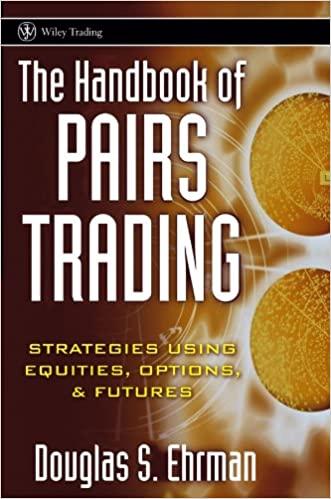Question
EM: Congratulations on receiving the You are not fired email. You: Thank you Elun! What can I do for you? EM: I walked past a


EM: Congratulations on receiving the You are not fired email.
You: Thank you Elun! What can I do for you?
EM: I walked past a desk and saw these two tables. I wanted to find out what they are but the person who made them just got fired. Do you have any ideas?
You: It looks like these are outputs from RMFI Software. In Panel A the person was trying to price a European call option using the Binomial model. Based on what he did, the call option should be priced at $8.76 given our current share price is $50.
EM: That makes sense. There was a conversation on issuing new employee options, with a time to maturity of exactly one year.
You: If the option has one year to maturity, then I can pretty much recover everything else.
EM: Really? Thats probably why they didnt fire you yesterday. Alright, tell me more about it. I want to know what the strike price, the interest rate, and the volatility is used.
You:
EM: Impressive! Now I want to understand more. Whats in Panel B?
You: I am confident that Panel B shows you how many units of shares one should hold if the goal is to create a riskless portfolio. That is, the numbers below share prices are the corresponding deltas required. (Hint: This conversation is discussed in the context of week 9 lecture on Binomial Option Pricing Model.)
EM: What do 0.834344 and 0.543193 mean then? I mean, if share price goes down from 59.4555 to 50, what does the change from 0.834344 to 0.543193 mean?
You:
EM: Thank you - I will twit about you. Ready to become an Internet celebrity?
Part A: Please Refer to Panel A. Based on the available information from the conversation above, what is the strike price? What is the risk-free interest rate (continuously compounded per annum)? What is the volatility of the stock price (per annum)? In your answer, you do not have to write out any equations, but you are expected to explain how you arrive at your answer.
Part B: Please refer to Panel B. Based on the available information from the conversation above, explain what 0.834344 and 0.543193 represent. When share price goes down from 59.4555 to 50, what does the change from 0.834344 to 0.543193 represent?
Panel A: Share price path and the corresponding call value 34.0690384.06903 \begin{tabular}{l} Share price: 50 \\ \hline Call value: 8.76048 \\ \hline \end{tabular} \begin{tabular}{|r|r|} \hline 70.69912 & \\ \hline 22.33832 & \\ \hline 50.4555 & \\ \hline 5.068129 \\ \hline 35.36112 & \\ \hline 0 & \\ \hline \end{tabular} 29.737470 Panel B: Share price path and the corresponding "delta" Panel A: Share price path and the corresponding call value 34.0690384.06903 \begin{tabular}{l} Share price: 50 \\ \hline Call value: 8.76048 \\ \hline \end{tabular} \begin{tabular}{|r|r|} \hline 70.69912 & \\ \hline 22.33832 & \\ \hline 50.4555 & \\ \hline 5.068129 \\ \hline 35.36112 & \\ \hline 0 & \\ \hline \end{tabular} 29.737470 Panel B: Share price path and the corresponding "deltaStep by Step Solution
There are 3 Steps involved in it
Step: 1

Get Instant Access to Expert-Tailored Solutions
See step-by-step solutions with expert insights and AI powered tools for academic success
Step: 2

Step: 3

Ace Your Homework with AI
Get the answers you need in no time with our AI-driven, step-by-step assistance
Get Started


